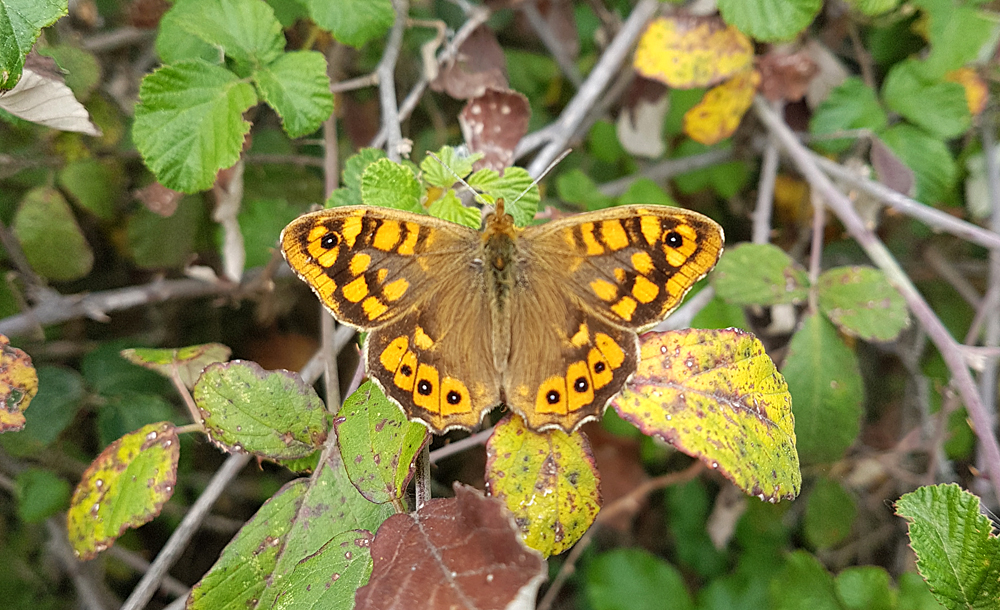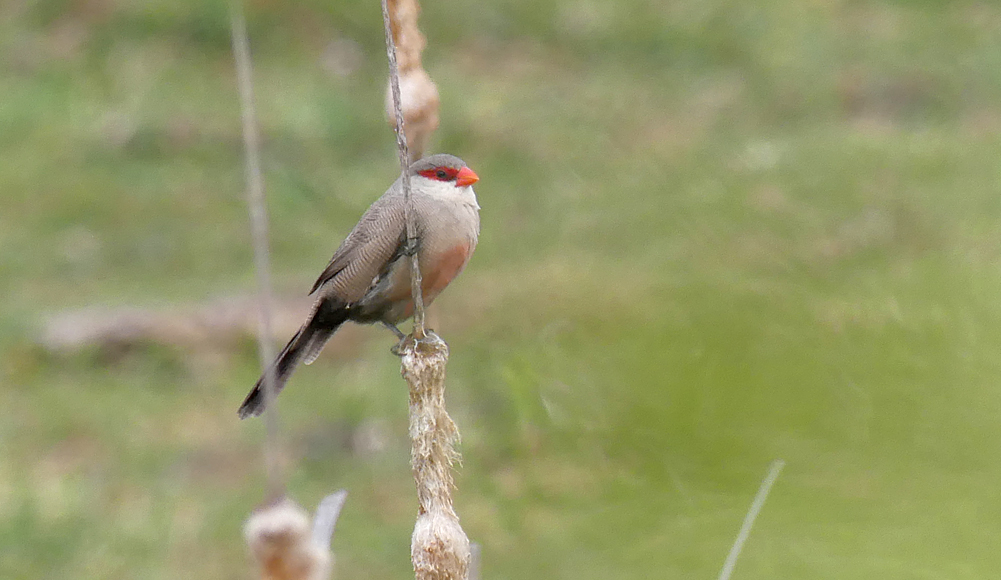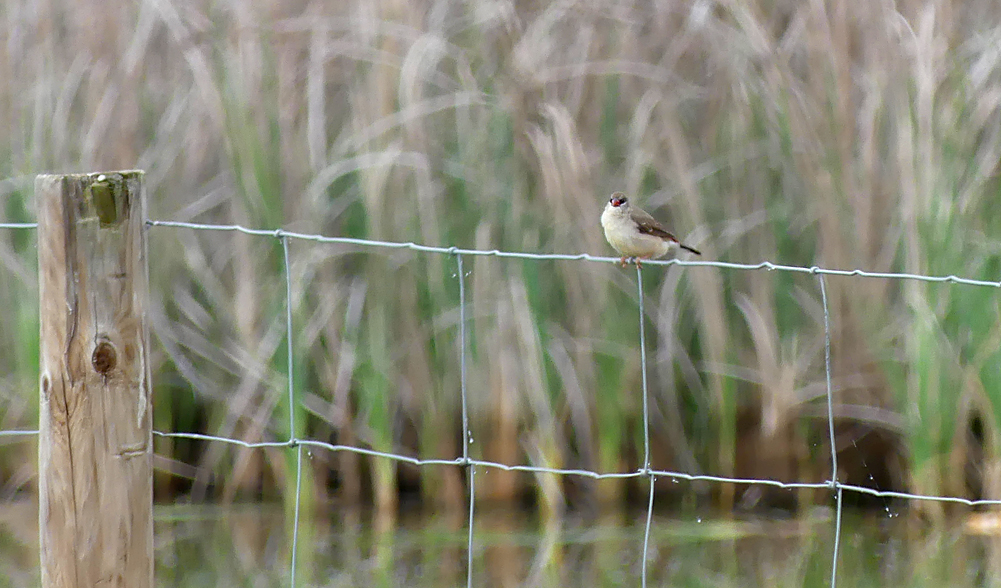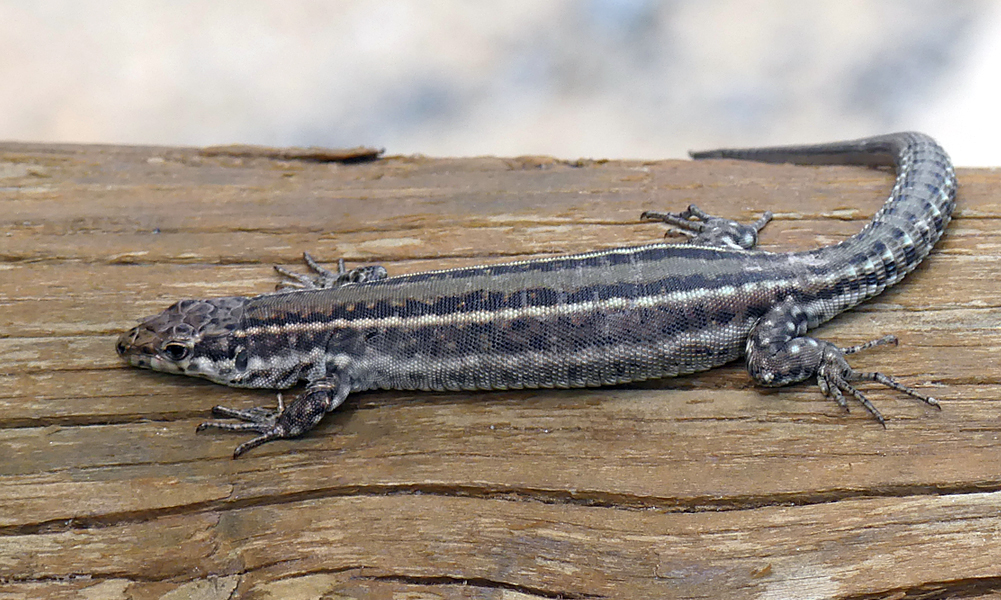Sunday 14th April 2019 (a)
/BUBO in ESPAÑA - part 6
Sunday morning and me and Andy were up nice and early to pack our bags, as we were about to leave our base in Plasenzuela and head north. Our next destination was to be the Gredos Mountains, the snow-capped peaks visible in the background of many of the previous photos. We had a final stroll around the village before loading the car, and calling in on Ian and Daniel to say goodbye, since they were flying back from Madrid that afternoon. Much credit must go to Daniel for putting up with us boring old blokes for a long couple of days - he had the patience of a saint.
Our base for exploring the mountains was on the north side of the sierra so we had to skirt a little to the west first. Our plan was to right a wrong from the previous afternoon, and we were determined to tick off Red Avadavat before we left the area. We had looked at the maps on the eBird website and saw that there was a nice cluster of sightings in the agricultural area west of Plasencia which wasn’t far off our route. We called at the ‘moth garage’ for petrol and breakfast/provisions and drove to Cacares, then north along the quiet highway through more wide open plains.
Before we reached Plasencia, we turned west and headed towards the small town of Galisteo and took a small dirt track north of the road. It was a pretty cloudy morning, and the habitat here was nothing special, mainly fields and hedges, but we supposed these Avadavats could be literally anywhere. We stopped at the first available spot and wandered down the track a little way. It just didn’t feel right for Avadavat as there weren’t any wet areas apart from a concrete drainage channel. There were plenty of commoner birds though with Stonechats and Sardinian Warblers seemingly more common here than further south, Cetti’s Warblers and Nightingales in the bushes, and we had an Iberian Grey Shrike over the far side of a field. There were also Speckled Woods flittering along the track, which were so orange, with large spots, that they looked more like Walls.
Speckled Wood - Galisteo, 14 Apr 19
We returned to the car and drove further up the bumpy track, which we couldn’t really tell was public or private. Crossing the main road we got to a farmyard where another Iberian Grey Shrike was perched up showing much more closely. Alongside this farm was a reedy drainage ditch which looked a lot more likely for Avadavats, so when we saw three tiny finch-like birds fly across then we thought we were in. However, like yesterday, upon lifting the bins we saw that these were again Common Waxbills! Undeterred, we drove on, looking for more good habitat.
Common Waxbills - Galisteo, 14 Apr 19
Common Waxbill - Galisteo, 14 Apr 19
Iberian Grey Shrike - Galisteo, 14 Apr 19
A little further on, we came across an actual marsh, with open water and a pretty extensive reedbed, and we were sure that this must be the place where the Avadavats hang out. We parked up and gave it a bit of time to find one. Scanning the marsh, we were very surprised to see a migrant Spotted Crake wandering around right out in the open. It didn’t stay out for long though and, as soon as it realised it was being watched, ran like the clappers into the safety of the reeds. It was a nice little spot for birding and we had a Snipe fly across, as well as my first Whitethroat of the trip. The usual Black-winged Stilts waded around, a Grey Heron flapped across, Fan-tailed Warblers zitted and a Yellow Wagtail flew up from the grass, perhaps a local Iberian.
The marsh at Galisteo, 14 Apr 19
Spotted Crake - Galisteo, 14 Apr 19
We did have a couple of brief sightings of very small birds flying briefly in and around the reedbed, but they were so quick it was difficult to tell if they were avadavats, waxbills or Fan-tailed Warblers. We were considering whether to try somewhere else when we saw another of these tiny birds further down the track drop down towards the fence. Rushing down there it then appeared in the middle of a bush to the right hand side and, peering through the branches, we could the see brown and buff plumage and the little black mask behind the red bill of a RED AVADAVAT. Thank heck for that! It didn’t stay long and disappeared, but soon after three birds appeared from nowhere and one of them sat out on the fence so I could get a snap. They were spooked very easily though and they soon departed back into the reedbed.
Red Avadavat - Galisteo, 14 Apr 19
Red Avadavat - Galisteo, 14 Apr 19
Hoopoe - Galisteo, 14 Apr 19
We didn’t hang around and were soon on the road again. We wanted to get to our location as quickly as possible so that we could get plenty of birding in during the afternoon. The road took us past the town of Plasencia where we drove under a Short-toed Eagle and yet another Black Vulture. It then headed north-east up the Jerte Valley. This valley may not have been the very quickest route timewise, but it was a pleasant drive through the verdant countryside. The valley seemed to be a centre for fruit growing and especially cherries as there was cherry-related paraphernalia and signs everywhere, as well as fields full of cherry trees. Also, we seemed to time our journey perfectly for the Palm Sunday celebrations, and in the villages we passed through on the way literally everybody was walking around holding a branch of a cherry tree - nearest they could find to a palm frond I guess. It was now lunchtime and we stopped in the village of Navaconcejo. Andy bought a sandwich from a surprisingly Athletic Bilbao-themed shop and we ate on a bridge overlooking the river Jerte. As well as the ubiquitous Serins and a Nightingale singing away, we had a Grey Wagtail and a Kingfisher by the water below.
Navaconcejo, 14 Apr 19
The road slowly climbed up to the pass and the vegetation started changing. There was a car park at the top to enjoy the view down the valley and we could see the route we’d just taken. A Subalpine Warbler was singing from the scrub just below and a streaky bunting we saw briefly was no doubt a female Cirl Bunting. We didn’t notice initially but there was a terrific Rock Bunting feeding in amongst the picnic tables giving excellent views. It doesn’t appear to be a common species, but when you find one they seem to be very confiding. We also saw a lizard on a fence but even with good photos I found the identification a little difficult. It stands a good chance of being the restricted-range Guadarrama Wall Lizard, but it looks like Common Wall Lizard might be at its south-westernmost point here. It may even be a type of Rock Lizard. I think I needed to take close up pics of the scales on the nose - I’ll know for next time!
Valle del Jerte, 14 Apr 19
Rock Bunting - Valle del Jerte, 14 Apr 19
Rock Bunting - Valle del Jerte, 14 Apr 19
Rock Bunting - Valle del Jerte, 14 Apr 19
wall lizard sp. - Valle del Jerte, 14 Apr 19
We now had left Extremadura and were now driving through Castilla y Leon province. We skirted the north slopes of the Sierra des Gredos and still had almost an hour’s drive through the foothills before we got to the area we were staying in. I commend Andy for his excellent endurance driving on these small roads. But we didn’t have time to waste because I had to get straight back out birding to search for a couple more lifers before bedtime.










































